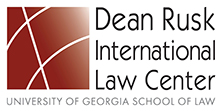Abstract
Article 2.2 of the Agreement on Technical Barriers to Trade (TBT) was applied to the GATT member countries in 1995. This article provides national product safety agencies with requirements for risk assessment and risk management. However, the terms used in the article are broad and open to interpretation. This paper argues that vast discretion and broad terms cannot solve technical barriers effectively; the “minimum requirements” standard within Article 2.2 of the TBT fails to consider those countries whose technology in product safety is inferior to that of developed countries. The United States has some of the strongest product safety measures, thanks to the consumer protection movement and its advanced technology. The U.S. has its own system of risk assessment and management for product safety; because the U.S. is a sovereign nation, they will not violate Article 2.2 unless their regulations and standards are more trade-restrictive than necessary to achieve safety. However, some of the United States’ methods are under attack for violating Article 2.2. This paper discusses the current problems of the TBT and U.S. practices, and suggest changes. First is a discussion of general theories on the reasons why each country has different practices and standards, the types of product safety regulations, and the characteristics of product safety regulations and standards. Next is an analysis of U.S. practices and Article 2.2 of the TBT Agreement. Finally, possible changes are suggested in order to address the issues raised.
Repository Citation
Ko, Suckhong, "U.S. Practices in Risk Assessment and Risk Management for Product Safety under Article 2.2 of the Agreement on Technical Barriers to Trade" (1995). LLM Theses and Essays. 182.
https://digitalcommons.law.uga.edu/stu_llm/182
Included in
Antitrust and Trade Regulation Commons, Comparative and Foreign Law Commons, Consumer Protection Law Commons, International Law Commons, International Trade Law Commons, Law and Economics Commons


